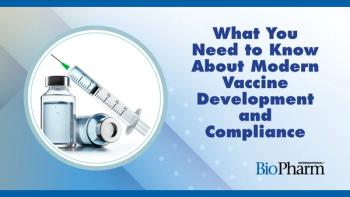
The Quest Continues for Quality Metrics
FDA aims is to collect data regularly from manufacturers that will indicate the ability of a firm and its facilities to produce high-quality therapies on a continual, error-free basis.
To encourage more reliable production of high-quality drugs and biologics, leaders of FDA’s Center for Drug Evaluation and Research (CDER) have been working with biopharma manufacturers for several years to devise a set of measures for effective and efficient plant operations. The aim is to collect data regularly from manufacturers that will indicate the ability of a firm and its facilities to produce high-quality therapies on a continual, error-free basis. The program will support a risk-based plant inspection program and reward firms that demonstrate capacity to meet quality standards consistently.
Industry organizations have contributed to this effort, sponsoring meetings and preparing white papers on effective approaches for measuring drug quality production and output. The Parenteral Drug Association (PDA), the International Society for Pharmaceutical Engineering (ISPE), and trade associations for drugs, biologics and generic drugs have polled members and developed
Although CDER officials expected to publish draft guidance by the end of 2014 on what data firms should collect and how to transmit them to FDA, that timeline was extended, as explained at the December 2014 PDA conference on pharmaceutical quality metrics. The Center for Biologics Evaluation and Research (CBER) moved to participate more fully in the metrics development program, with an eye to preventing manufacturing problems that in the past have depleted vaccine supplies. Another challenge has involved reaching consensus on which measures can best indicate the “quality culture” at a company.
Establishing the infrastructure and systems at FDA to collect and evaluate the metric data also has been a complex undertaking. To start, the agency had to compile a database on which companies produce which drugs where, explained Theresa Mullin, director of CDER’s Office of Strategic Programs and head of the new Office of Surveillance in CDER’s new Office of Pharmaceutical Quality (OPQ), which leads efforts to devise more effective ways to evaluate the quality of drug products, sites, and production systems. Building an FDA facility inventory, she explained, involved combining information on some 40,000 operators listed in multiple agency systems; by eliminating redundancies, overlaps and obsolete information, Mullin’s office whittled it down to a more credible database of approximately 14,000 facilities that produce the full range of biopharmaceutical products and ingredients.
Russ Wesdyk, scientific coordinator and acting deputy director of the Office of Surveillance, explained that quality metrics will apply to all industry segments and dosage forms, including API manufacturers, packagers, quality control laboratories, and both foreign and domestic producers. Basic metrics are likely to include lot acceptance rate (number of batches rejected/attempted); right-first-time rate; product quality complaint rate; and invalidated out-of-specification rate. Manufacturers have also suggested tracking product recalls and stability failures.
Quality culture metrics are trickier. One could be whether a company’s internal annual product review is completed on time. Another is the level of senior management engagement in annual product reviews. Metrics should support root cause analysis and corrective and preventive action (CAPA) programs, explained Mary Malarkey, director of CBER’s Office of Compliance and Biologics Quality. A low CAPA rate at a facility may not indicate high-quality production, Wesdyk noted, but that the system is not fully capturing problems up front; a higher CAPA rate, he observed, could be “a good thing.”
Wesdyk emphasized that FDA plans to phase in the metrics program, starting with at least a one-year “learning period.” A clear goal is for this quality reporting system to support a more effective, risk-based plant inspection program that is able to focus on more problematic operations and produce more consistent observations and more streamlined inspection reports. Metrics may inform inspection frequency, help FDA set inspection priorities, and identify products and processes to target (or omit) during an inspection, explained analyst Neil Stiber of the Office of Strategic Programs. Manufacturers won’t receive “grades” or “report cards” on plant operations, but a more general assessment of where a company stands in the spectrum of manufacturing quality, Mullin said. In the end, Wesdyk added, the program should identify and reward firms to “go above and beyond” basic standards.
FDA anticipates issuing initial guidance in the coming months, which will generate comments for further discussion at a public meeting. This should lead to a final program by the end of 2015, setting the stage for implementation in 2016. One issue is whether metrics should differ for brand and generic drugs, and for sterile products or other dosage forms. Manufacturers would like to see FDA’s metric initiative provide a basis for a global quality assessment program. Even though European authorities says they expect to take different approaches from FDA in using quality metrics, all parties acknowledge the benefits of collecting common data to support quality evaluations so that manufacturers can submit the same measures on operations and products to multiple regulatory agencies.
Newsletter
Stay at the forefront of biopharmaceutical innovation—subscribe to BioPharm International for expert insights on drug development, manufacturing, compliance, and more.





